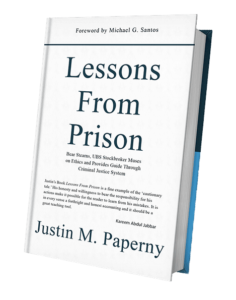What Is A Compassionate Release From Federal Prison?
I would like my husband to get a “compassionate release,” a very nice woman told me earlier today. Apparently, her husband just surrendered to Fort Dix Federal Prison Camp and some prisoners are telling him he should “try for a compassionate release.”
So, what exactly is a compassionate release? Good question!
The United States Code provides the mechanism for a compassionate release under Title 18, Section 3582. In a moment I will discuss what factors administrators use, but for now let me point out the obvious.
FEDERAL PRISONERS AND THEIR FAMILIES MUST REMEMBER THE MISSION OF THE BUREAU OF PRISONS.
As I write about frequently, the prison system is designed to receive inmates, not to release them before the completion of their sentence. While states might struggle with budgets to run prisons, the federal prison system does not. They have an endless supply of resources: our tax dollars.
Obtaining a compassionate release is complicated, in part, because the Director of the Bureau of Prisons initiates the motion. That doesn’t make the motion impossible, but at White Collar Advice, we consider it very unlikely that the Director of the Bureau of Prisons will put forth such a motion.

What Is A Compassionate Release From Federal Prison?
We have worked with families who want to pursue this path. That said, before we are retained and collect a fee, we are quick to temper expectations. Similarly, inmates and their families who want to work independently to pursue a compassionate or early release through this mechanism should not have high expectations for success.
Although Congress authorized the mechanism, by giving the Bureau of Prisons discretion on whether to file the motion, they ensure that few inmates actually receive benefit from a compassionate release.
What factors are considered by the Bureau of Prisons?
In deciding whether to file a motion for Compassionate Release, administrators within the Bureau of Prisons first consider whether the inmate’s release would pose a danger to the safety of society. When interpreting such language, White Collar Advice encourages inmates to consider the perspective of BOP administrators. According to them, anytime they authorize the early release of an inmate, the safety of society is put into more jeopardy than if the inmate were to remain in custody.
Rather than taking the risk of releasing someone early, the BOP encourages staff members to keep people in prison as long as possible.
To initiate a request for release on grounds of compassion, the inmate must file a request with the warden. His request should articulate that his particular situation has changed since the judge sentenced him, and the changes are of a “particularly extraordinary or compelling” nature.
Since the changes could not have been anticipated prior to sentencing, the inmate may argue that the judge should have an opportunity to review the sentence to determine whether continued incarceration is warranted.
The inmate’s letter to the warden should also detail his proposed plans in the event that the Director chose to file the motion and a judge chooses to release him. In other words, where will the inmate live? How will he support himself?
If the basis for the requests concerns the inmate’s health, his request should detail how he will receive medical treatment and how the inmate will pay the costs of that medical treatment.
Theoretically, the Bureau of Prisons must give due consideration to any inmate request for a reduction in sentence (RIS) under this statute of compassionate release. Some of the grounds for such a request may include:
Terminal Medical Condition: If the inmate is diagnosed with a terminal, incurable disease, and has a life expectancy of 18 months or less, the BOP may consider the request. The inmate should show that the condition wasn’t known at the time of sentencing in order to overcome anticipated BOP objections that the judge already knew the medical condition and still imposed the sentence.
Debilitated Medical Condition: If the inmate can show that he has an incurable, progressive illness, or suffers from a debilitating injury from which he cannot recover, the BOP should consider the request for compassionate release.
Elderly Inmates: Inmates who are 65 or older and suffer from chronic or serious medical conditions, and their health is diminishing, may request compassionate release once they have served at least 50% of the sentence.
Death of a Family Member Caregiver: If the inmate has a child, and the primary caregiver of that child has either died or become incapacitated, he may request compassionate release so that he can care for the child. The inmate should provide full documentation that shows the death certificate or verifiable medical documentation of the incapacitation.
Incapacitation of a Spouse: If the inmate’s spouse became incapacitated, and the inmate is the only available caregiver, he may request compassionate release.
If the warden agrees that the inmate’s request has merit, the warden must document his reasons and send his written recommendation for the inmate’s early release to the Bureau of Prisons’ General Counsel for further review. Neither the warden, nor anyone other than the BOP’s Director can communicate the request to the sentencing judge. Should the Director choose to file a motion, the Director will work with the U.S. Attorney’s Office in the appropriate judicial district to file the motion.
The odds of obtaining a compassionate release might be low, but that does not mean you should not try, presuming you qualify based on the notes above.
Questions about a compassionate release, prison, probation, etc? If so, schedule a call here.
Best,
Justin




